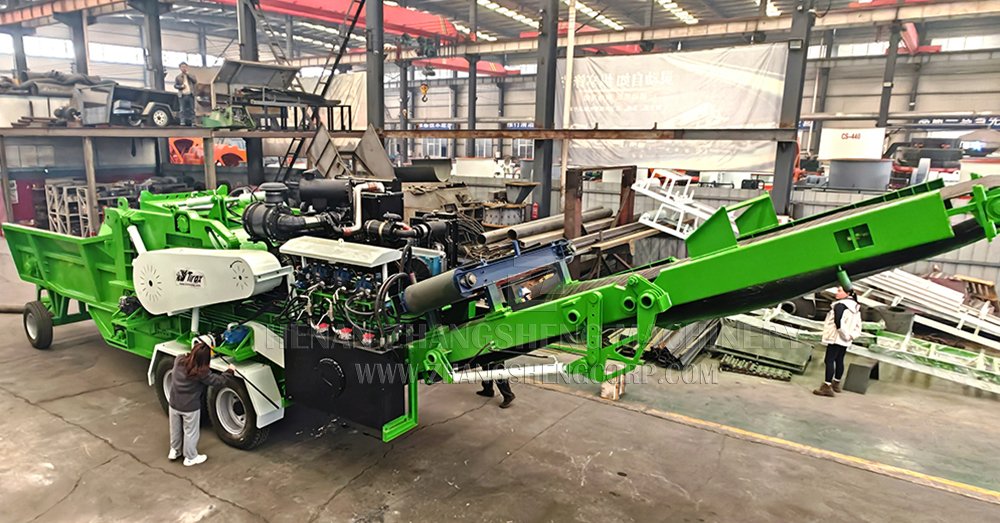Horizontal grinders are essential machines used in industries like forestry, landscaping, and recycling to process large amounts of wood debris, logs, and organic materials. They offer exceptional efficiency in reducing the size of bulky material, transforming it into mulch, wood chips, or other reusable materials. If you're considering investing in a horizontal grinder, it's important to understand how these machines work, their features, and the key benefits they offer.
What is a Horizontal Grinder?
A horizontal grinder is a large, industrial-grade machine designed to reduce the size of raw wood materials, including logs, brush, and stumps. Unlike traditional wood chippers, which use a vertical feed system, horizontal grinders have a horizontal drum or hammermill that grinds the material into smaller pieces. The feedstock is fed into the machine’s hopper and then ground into mulch or chips, which can be used for a variety of purposes, such as landscaping, composting, or biomass fuel.
Horizontal grinders are available in different sizes and configurations, from smaller models for residential or landscaping use to heavy-duty machines that are used in large-scale commercial or industrial operations. These machines are known for their high efficiency and the ability to handle large quantities of material, making them ideal for processing wood waste in forestry, recycling, and waste management operations.
Drum or Horizontal Hammermill System
The defining feature of a horizontal grinder is its horizontal grinding mechanism. These machines typically use a drum or a horizontal hammermill to process material. The drum is equipped with sharp teeth or hammers that crush and break down the material as it moves through the machine. The horizontal configuration allows for more consistent feeding and easier handling of bulky materials such as logs, stumps, and large brush piles.

High Capacity and Throughput
One of the major benefits of horizontal grinders is their ability to handle large quantities of material at once. These machines are equipped with powerful engines and large feeding hoppers, allowing them to process massive amounts of debris quickly and efficiently. They are ideal for land clearing, logging operations, and waste management tasks where high throughput is essential.
Versatile Feed System
Horizontal grinders typically feature a versatile feed system that can handle a wide range of materials, from small branches to large logs and stumps. The feed system can be equipped with either a hydraulic feed mechanism or a gravity feed, depending on the model. Hydraulic systems are often preferred for larger grinders because they can automatically pull material into the machine, reducing manual labor and improving overall processing speed.
Adjustable Output Size
Many horizontal grinders offer the ability to adjust the size of the final product, whether it's mulch, wood chips, or other materials. This is typically achieved by adjusting the screen or grate that sits at the grinder’s discharge end. The size of the output can be customized based on the desired application, such as creating fine mulch for landscaping or larger chips for biomass fuel.
Fuel Efficiency
Horizontal grinders are equipped with powerful engines, but many modern models are designed to be fuel-efficient. Newer engines are optimized to minimize fuel consumption while maximizing output. Additionally, some models feature technologies that allow for better fuel management, reducing operating costs over time.
Mobility Options
Horizontal grinders come in both stationary and portable models. Stationary grinders are fixed at a specific location, making them ideal for use in large-scale processing operations. On the other hand, portable models are mounted on trailers and can be easily transported between different job sites. This flexibility is particularly beneficial for contractors or operators working in remote areas or on large, dispersed projects like land clearing or logging.


